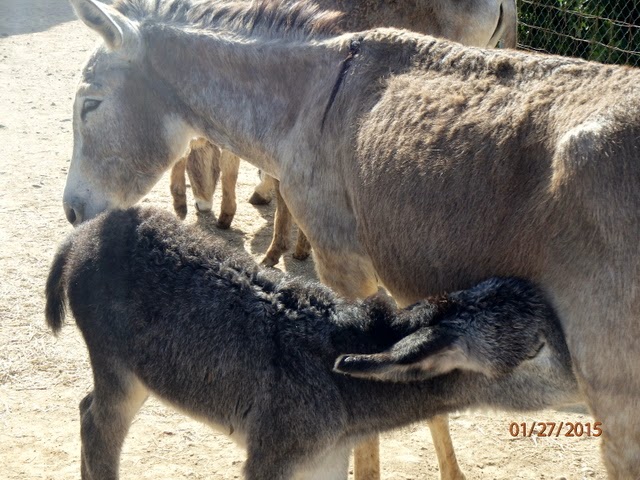Wild donkeys have a tough time. Water is scarce and unreliable. Food isn't much easier to come by. Many wild donkeys are dehydrated and malnourished. Many others are killed or injured in collisions with cars. A baby donkey who loses his mother is in a terrible situation. There are about 150 of these poor animals roaming the desolate parts of the island.
Enter the Bonaire Donkey Sanctuary. This organization was founded more than 20 years ago to provide care for malnourished or injured donkeys. The Sanctuary has more than 140 acres of land, and over four hundred donkeys live there.
There is a separate compound for "senior citizens," one of which is more than 40 years old. A second compound is devoted to new mothers and their babies.
For a small fee, it is possible to drive through the Sanctuary and get up close to the donkeys. Visitors are encouraged to buy bags of carrots, and the donkeys know very well that a car or truck driving by is a chance to get a treat. Our car was surrounded by up to dozens of donkeys all hoping for a carrot. We had as many as 6 or 8 donkey noses pushed through our car windows at a time, and some of the donkeys would trot along side as we drove slowly through. A bit overwhelming at times, but incredibly fun.
The Mom&Child compound was also wonderful. Foals ranging in age from 1 week to 3 months were there, and still nursing from their mothers. Especially the young ones have soft hair, but everyone (including the Moms) was happy to get petted and stroked.
Anyway, the Sanctuary is a very good cause. They neuter all the animals in the Sanctuary, and are trying to do the same for the remaining wild donkeys. You can find out more at Bonaire Donkey Sanctuary, and you can make a donation online.
Here are some photos of our visit.
 |
| A few donkeys checking us out. Many more joined them later. |
 |
| Noses through the window, searching for carrots |
 |
| This fella is just one week old |
 |
| Mom's milk is the best food |








